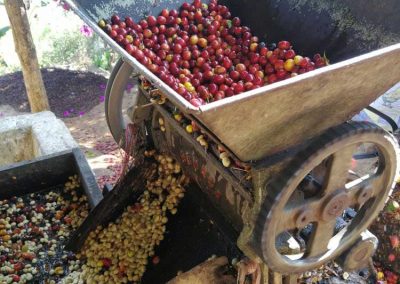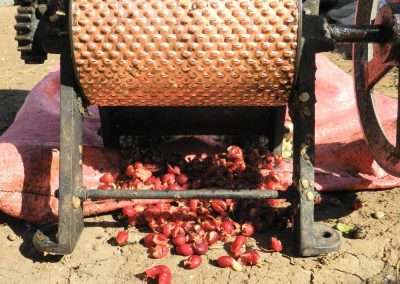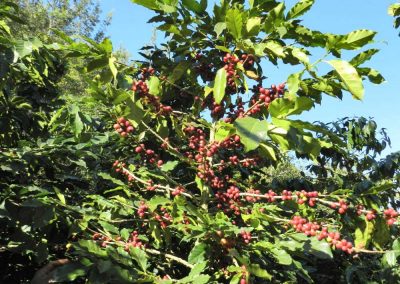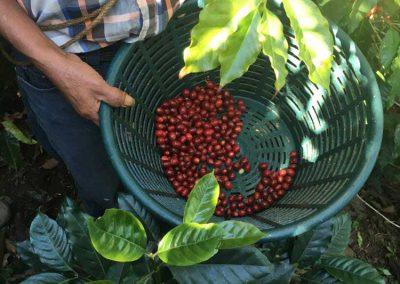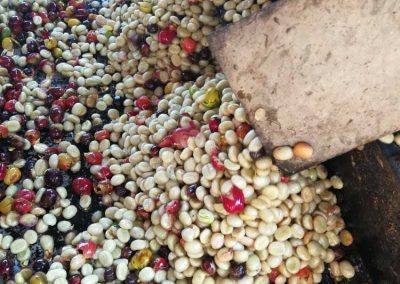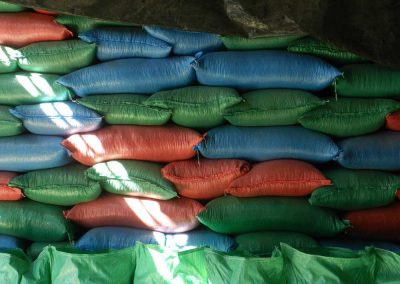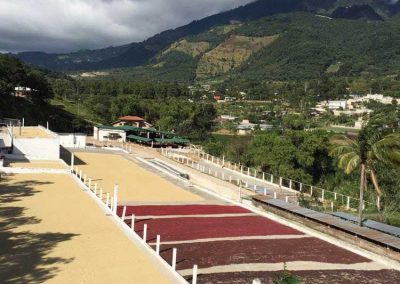Origin Education
Guatemala
Guatemala boasts a variety of growing regions and conditions that produce spectacular coffees. Today, the country is revered as a producer of some of the most flavorful and nuanced cups worldwide. We are proud to work with several exceptional in-country partners to bring these coffees to market.
Details
Place in world production:
Average annual production:
Common Arabica varieties:
Key Regions:
Harvest Months:
History of Coffee in Guatemala
Coffee Arrives in Guatemala
Some accounts have coffee cultivation in Guatemala starting as early as the mid-18th century, when Jesuits brought coffee plants to decorate their monasteries in the city of Antigua. There are accounts dating back to the early 1800s of Guatemalans drinking coffee. Around that time, a perfect storm of blocked trade routes during the Napoleonic Wars, crop-destroying locusts and the creation of cheaper and longer lasting artificial dyes conspired to cripple Guatemalan exports of Indigo, one of the country’s main cash crops. In order to bolster their failing economy, many people began cultivating coffee as a new cash crop.
For the next 150 years, most arable coffee lands were owned by large landowners of European descent. These landowners employed indigenous people from the highlands, few of whom officially owned their own land, to tend and harvest coffee on large farms. This model, while contributing greatly to existing inequality, also put Guatemala on the global map of coffee production
The Ongoing Struggle for Equality
In June 1952, during the Guatemalan Revolution, Congress passed Decree 900, also known as the Agrarian Reform Law. The law redistributed land from nearly 1,700 estates to 500,000 landless peasants. The majority of beneficiaries were indigenous people who had not had access to land since the Spanish Conquest in the 1500s. In turn, the law angered many powerful landowners, including the United Fruit Company and the United States, who saw the reform as a communistic threat. The land reform law is often cited as an inciting factor in the 1954 coup d’état that marked the beginning of decades of civil war.
The Guatemalan civil war did not end until 1996, and the violence of the second half of the 20th century hindered the Guatemalan coffee industry significantly. Peacetime stability slowly worked to spread coffee production beyond historic coffee growing regions. Beginning in the 21st century, land where popular crops like macadamia and avocado were once grown came to be replaced with coffee.
Where Coffee is King
Today, the Guatemalan coffee sector is a behemoth. It generates around 40% of all agricultural export revenue and almost ¼ of the population is involved in producing the 3.6 million bags of coffee Guatemala exports each year.
Guatemala’s strictly hard beans (those grown above 1,350 meters above sea level) are considered to be among the world’s best coffee. In particular, beans grown on the southern slopes of the country’s many volcanoes are considered highly desirable. Regional blends from areas like Atitlan and Huehuetenango are pursued with similar fervor as single farm lots from Antigua.
Guatemala’s stellar coffee reputation is a combination of the right environmental conditions and a strong focus on cultivation and processing methods. Coffee is widely cultivated and grows in 20 of the 22 departments in Guatemala. High altitudes, consistent rainfall and mineral-rich soils make coffee an excellent crop across much of Guatemala. The nearly 300 unique microclimates means that Guatemalan coffees boast a diverse range of flavors.
Almost all coffee is Arabica and 98% is shade grown. Nearly all Arabica production is Fully washed, but natural and honey methods are becoming increasingly popular and producing many excellent lots. Many in the country are employing experimental processing methodologies, including soaking after washing, and Guatemalan farmers have been at the forefront of greenhouse drying methodologies. Guatemala’s high altitudes, diverse microclimates, consistent rainfall patterns, and excellent cultivation and processing, make for a variety of distinctive types of Guatemalan Arabica coffees.
High Costs, Low Returns
The Guatemalan coffee industry experienced a major setback with the 2010 appearance of Coffee Leaf Rust (CLR) in Latin America. The epidemic peaked in severity in 2012, and though CLR continues to affect some farms, Guatemala continues to produce high-quality, record-breaking coffees. In 2017, new and varied processing methods pushed prices at the Guatemalan Cup of Excellence contest to record highs.
However, for the majority of coffee farmers, increasing costs of production, driven mainly by growing labor costs and higher inputs, combined with low C market prices have led to unsustainable harvests where input costs are higher than what many farmers receive for their crops. Production costs continue to rise due to the high minimum wage in Guatemala compared to other Central American countries, and smallholder farmers are paying nearly twice as much for labor – as a percentage of their total costs – than their larger counterparts.
Many coffee farmers in Guatemala have turned to beekeeping as a way to supplement their incomes and provide nutrition for their families. Other farmers have been following the suggestions of the Asociación Nacional del Café (Anacafé) – Guatemala’s national coffee association – and diversifying their crops by intercropping bananas, macadamias and other potential cash crops.
Smallholder farmers have been hit especially hard by coffee leaf rust (CLR). World Coffee Research (WCR) and Anacafé have worked together to introduce new CLR-resistant varieties—and the best ways to grow them—into smallholder communities. Marsellesa and Centroamericano are being trialed on smallholder farms in Antigua, and the initial feedback is promising.
Despite these efforts, many farmers still have seen little choice but to leave their homes for the promise of a better future ‘in the north’ (the United States). Outward migration continues to pose challenges for the industry as a whole.
Smallholders Leading the Way
The quality of coffee being produced in Guatemala is increasing, overall, due to the diversity of the industry’s producers. There are more and more small holder farmers producing exceptional coffee at high altitudes. Cooperatives are becoming more appealing to so many smallholders because they often offer farmers financing and other support for improving their farming and processing and are frequently able to offer higher prices for cherry than middlemen. Many cooperatives have initiated quality improvement training for farmer members and are becoming more adept at helping members market their coffee as specialty.
Credit: Origin Educations are courtesy of our supplier, Sucafina Specialty.

